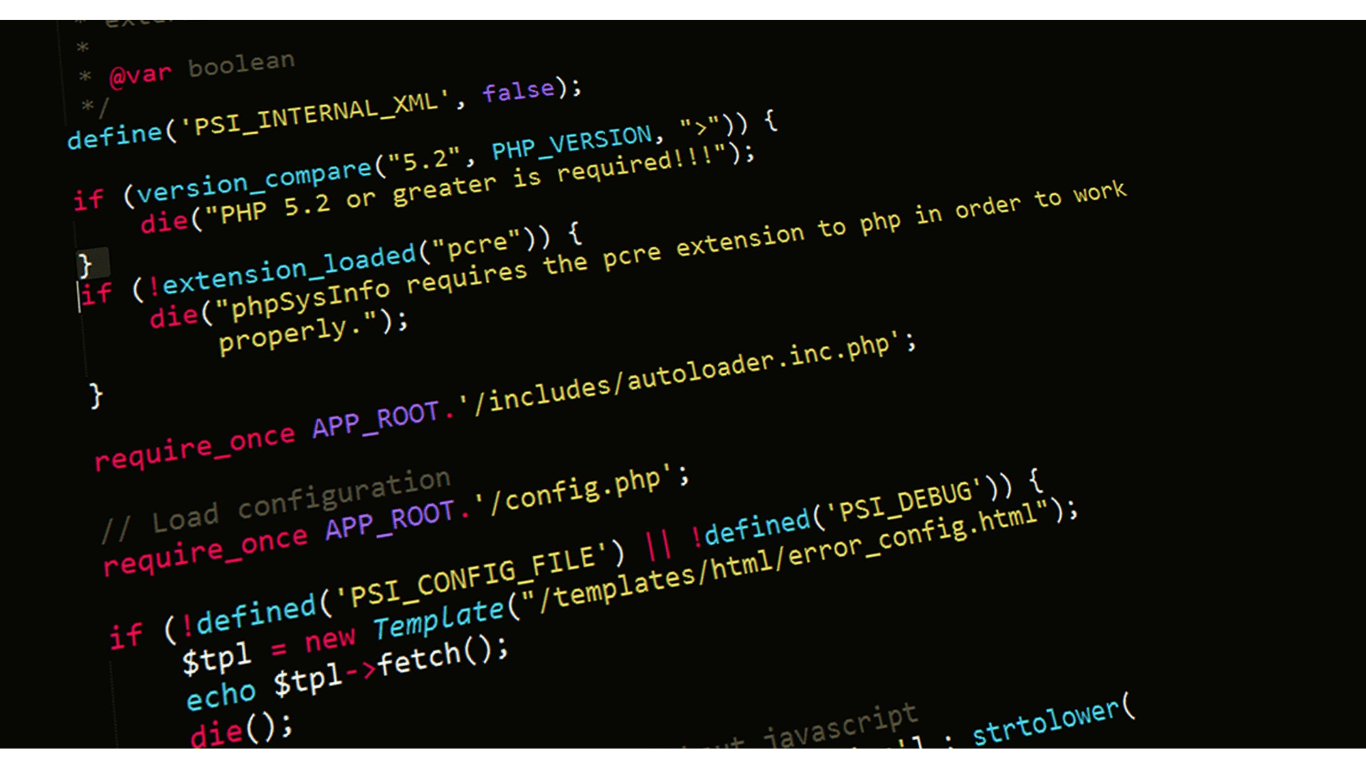Understanding Backend Development
What is Backend Development?
- Backend development refers to building and maintaining the server-side of web applications. It involves working on the behind-the-scenes functionality that powers the user-facing elements of a website or application. In backend development, I focus on managing databases, server logic, and ensuring smooth communication between the server and the client-side. It’s crucial for creating scalable and robust applications by handling data storage, security, and performance optimizations efficiently.
Key Components of Server-Side Applications
In server-side applications, several key components work together to deliver a seamless user experience. These components include databases for storing and managing data, server-side scripting languages like Node.js or Python for processing requests, and APIs for enabling communication between different software systems. By integrating these components effectively, I can develop resilient server-side applications capable of handling complex tasks and high volumes of user interactions.
Backend Development Languages and Frameworks
Popular Programming Languages for Backend Development
When it comes to backend development, there are several popular programming languages that developers often leverage to build robust server-side applications.
- JavaScript: JavaScript is a versatile language commonly used for both frontend and backend development. With the introduction of Node.js, JavaScript has become a prominent choice for server-side scripting.
- Python: Known for its readability and simplicity, Python is widely favored by developers for backend programming. It offers a wide range of frameworks like Django and Flask for building scalable web applications.
- Java: Java is renowned for its stability, security, and cross-platform compatibility, making it a reliable choice for enterprise-level backend development projects.
- PHP: PHP has been a staple in web development for many years, offering powerful frameworks like Laravel and Symfony for creating dynamic and feature-rich server-side applications.
Frameworks That Empower Backend Development
Frameworks play a crucial role in accelerating backend development by providing developers with pre-built modules, libraries, and tools to streamline the coding process.
- Express.js: As a minimalist and flexible Node.js framework, Express.js simplifies the development of backend applications by offering a robust set of features for routing, middleware integration, and more.
- Django: Django is a high-level Python framework known for its “batteries included” approach, offering built-in features like authentication, admin panels, and ORM support, allowing developers to focus on application logic.
- Spring Boot: Spring Boot, based on the popular Java Spring framework, simplifies Java backend development by reducing setup time and providing production-ready features out of the box.
- Ruby on Rails: Ruby on Rails is a full-stack web development framework that follows the “convention over configuration” principle, enabling rapid application development and emphasizing code simplicity.
By choosing the right programming language and framework for backend development, developers can build scalable, secure, and feature-rich server-side applications that meet the demands of modern digital landscapes.
Database Management Essentials

1. Choosing the Right Database
When it comes to backend development, selecting the appropriate database is crucial. I’m here to guide you on making this decision confidently. Consider your project requirements carefully; if you need a flexible and scalable database, NoSQL options like MongoDB could be the way to go. On the other hand, for structured data and complex queries, SQL databases such as MySQL or PostgreSQL might be more suitable. By evaluating your needs thoroughly, you can make an informed choice that sets a strong foundation for your server-side application.
2. Database Optimization for Performance
Optimizing your database for performance is key to ensuring your server-side application runs smoothly and efficiently. In my experience, indexing plays a significant role in enhancing database performance. By properly indexing your database tables based on frequently queried fields, you can speed up data retrieval and improve overall application responsiveness. Additionally, regular database maintenance tasks like cleaning up redundant data and optimizing queries can further boost performance. Prioritizing database optimization techniques can lead to a more responsive and reliable server-side application.
Server Management and Deployment
1. Setting Up a Reliable Server Environment
When it comes to setting up a reliable server environment, I focus on key aspects that ensure the smooth operation of server-side applications. Firstly, selecting the right hosting provider is crucial. I consider factors like server reliability, uptime guarantees, security measures, and scalability options to meet the application’s needs.
Next, I pay close attention to server configuration. I optimize server settings for performance, security, and resource utilization. By fine-tuning parameters such as memory allocation, caching mechanisms, and load balancing, I can enhance the overall efficiency of the server environment.
Additionally, I implement robust backup and recovery strategies to safeguard data integrity. Regular backups, both on-site and off-site, provide an essential layer of protection against data loss due to unforeseen incidents, ensuring uninterrupted service availability.
2. Strategies for Efficient Deployment
In deploying server-side applications efficiently, I follow a systematic approach to ensure seamless execution. I rely on automated deployment tools and continuous integration practices to streamline the deployment process. By automating tasks like code deployment, testing, and monitoring, I minimize manual errors and accelerate the release cycle.
Furthermore, I adopt containerization technologies such as Docker to create lightweight, portable application environments. Containerization simplifies deployment across different infrastructure platforms, ensuring consistency in application behavior and dependencies.
Moreover, I implement scalable deployment architectures, such as microservices or serverless computing, to optimize resource utilization and accommodate varying workloads. This modular approach enhances application scalability and resilience, allowing for efficient utilization of server resources.
By employing these strategies for server management and deployment, I ensure the robustness and scalability of server-side applications, meeting the demands of modern digital environments effectively.
Security Measures for Backend Applications
Protecting Data and Preventing Breaches
Securing data is a critical aspect of backend development to prevent unauthorized access and data breaches. I implement robust encryption techniques to protect sensitive information stored in databases. Regularly updating security protocols and applying the principle of least privilege ensures that only authorized users can access specific data. By implementing secure coding practices and conducting regular security audits, I minimize vulnerabilities and safeguard the integrity of the backend infrastructure.
Implementing Authentication and Authorization
Authentication and authorization mechanisms are vital components of backend applications to control access and ensure data protection. I adopt multi-factor authentication and token-based authorization to verify user identities and authorize legitimate actions within the system. By integrating role-based access control, I define permissions based on user roles, limiting access to sensitive data. Implementing secure API endpoints with proper authorization checks strengthens the overall security posture of the backend system.
Scalability and Performance Optimization
Techniques for Scaling Server-Side Applications
To ensure the seamless growth of server-side applications, I leverage various techniques that enhance scalability. One fundamental approach is horizontal scaling, which involves adding more servers to distribute the traffic load efficiently. By employing load balancers, I can evenly distribute incoming requests among multiple servers, preventing any single server from becoming overwhelmed. Another effective strategy is vertical scaling, where I increase the resources of a single server, such as CPU, memory, or storage capacity, to handle additional load.
Microservices architecture is another key technique I utilize for scaling applications. By breaking down the functionality into smaller, independent services, I can scale each component separately based on demand. This approach enhances flexibility, resilience, and scalability since I can upgrade or scale individual microservices without affecting the entire application.
Furthermore, I implement caching mechanisms to optimize performance and reduce the load on servers. By storing frequently accessed data in cache memory, I can swiftly retrieve information, thereby enhancing response times and improving overall application performance. Using Content Delivery Networks (CDNs) also aids in scaling applications by caching content at various edge locations globally, reducing latency and enhancing user experience.
Monitoring Performance and Maintaining Uptime
Monitoring performance metrics is crucial to identifying bottlenecks and optimizing server-side applications. I rely on monitoring tools that track key performance indicators such as response times, server load, memory usage, and error rates. By analyzing these metrics, I can proactively identify issues and fine-tune the application for optimal performance.
Additionally, implementing automated monitoring and alerting systems helps me maintain uptime by promptly detecting and addressing any anomalies or downtime incidents. These systems notify me of performance deviations, potential failures, or security breaches, enabling me to take immediate corrective actions and prevent service disruptions.
Regular performance testing and capacity planning are essential practices to ensure the application can handle increased loads and maintain performance levels during peak usage periods. By conducting load testing and stress testing, I can simulate high traffic scenarios and evaluate the application’s performance under various conditions. This proactive approach allows me to optimize resource allocation, identify scalability limits, and enhance overall application robustness.
Testing and Quality Assurance
Types of Tests for Backend Systems
When it comes to backend systems, testing plays a crucial role in ensuring the reliability and functionality of server-side applications. There are various types of tests that are essential to maintain the quality of backend systems.
- Unit Tests: These tests focus on verifying the smallest units of code, usually individual functions or methods, to ensure they work correctly in isolation.
- Integration Tests: Integration tests check how different parts of the system work together. They validate the interactions between components, ensuring they integrate smoothly.
- End-to-End Tests: End-to-End tests evaluate the entire application flow from start to finish. They simulate real user scenarios and help in identifying any issues in the complete system.
- Performance Tests: Performance tests assess the speed, responsiveness, and stability of backend systems under various load conditions. These tests help in optimizing the application’s performance.
Continuous Integration and Delivery Best Practices
Implementing continuous integration and delivery practices is crucial for maintaining the quality and efficiency of backend systems.
- Automated Builds: Setting up automated build processes ensures that code changes are verified and incorporated into the main codebase frequently, reducing integration issues.
- Automated Testing: Automating tests for every code change helps in identifying bugs early in the development process, ensuring a reliable and stable backend system.
- Continuous Deployment: Continuous deployment allows for the automatic deployment of code changes to production environments, streamlining the release process and increasing delivery speed.
- Version Control: Utilizing version control systems like Git enables tracking changes, collaborating with team members, and reverting to previous states if needed, ensuring code integrity.
By incorporating these testing and continuous integration best practices, backend developers can enhance the reliability, scalability, and performance of server-side applications, contributing to a seamless user experience and robust digital presence.

 Amber Derbyshire is a seasoned article writer known for her in-depth tech insights and analysis. As a prominent contributor to Byte Buzz Baze, Amber delves into the latest trends, breakthroughs, and developments in the technology sector, providing readers with comprehensive and engaging content. Her articles are renowned for their clarity, thorough research, and ability to distill complex information into accessible narratives.
With a background in both journalism and technology, Amber combines her passion for storytelling with her expertise in the tech industry to create pieces that are both informative and captivating. Her work not only keeps readers up-to-date with the fast-paced world of technology but also helps them understand the implications and potential of new innovations. Amber's dedication to her craft and her ability to stay ahead of emerging trends make her a respected and influential voice in the tech writing community.
Amber Derbyshire is a seasoned article writer known for her in-depth tech insights and analysis. As a prominent contributor to Byte Buzz Baze, Amber delves into the latest trends, breakthroughs, and developments in the technology sector, providing readers with comprehensive and engaging content. Her articles are renowned for their clarity, thorough research, and ability to distill complex information into accessible narratives.
With a background in both journalism and technology, Amber combines her passion for storytelling with her expertise in the tech industry to create pieces that are both informative and captivating. Her work not only keeps readers up-to-date with the fast-paced world of technology but also helps them understand the implications and potential of new innovations. Amber's dedication to her craft and her ability to stay ahead of emerging trends make her a respected and influential voice in the tech writing community.
